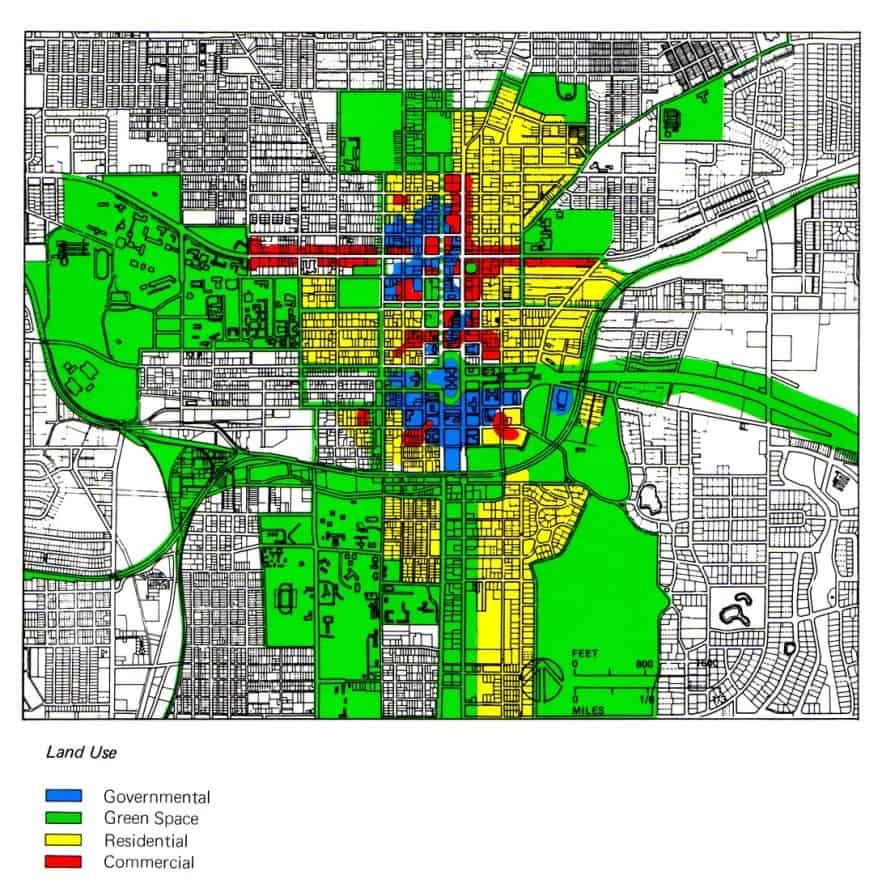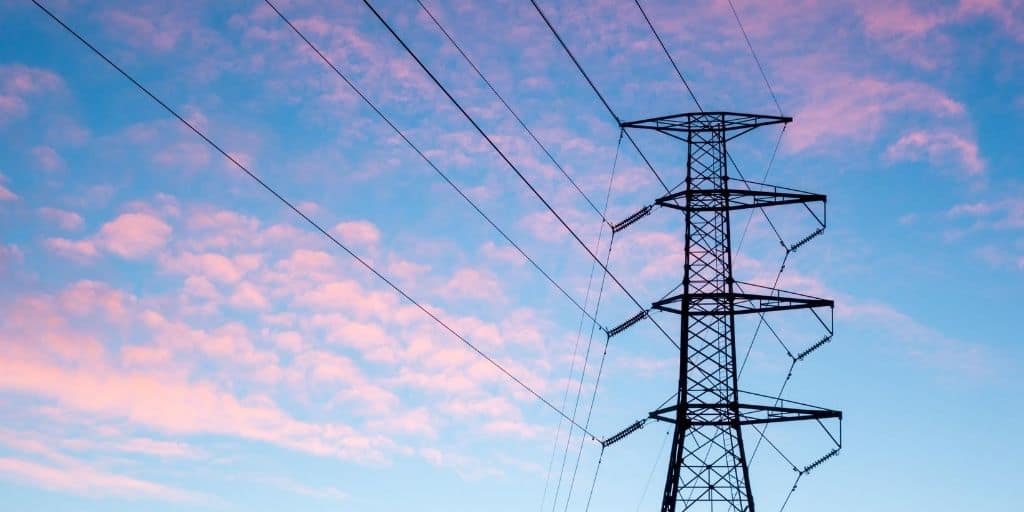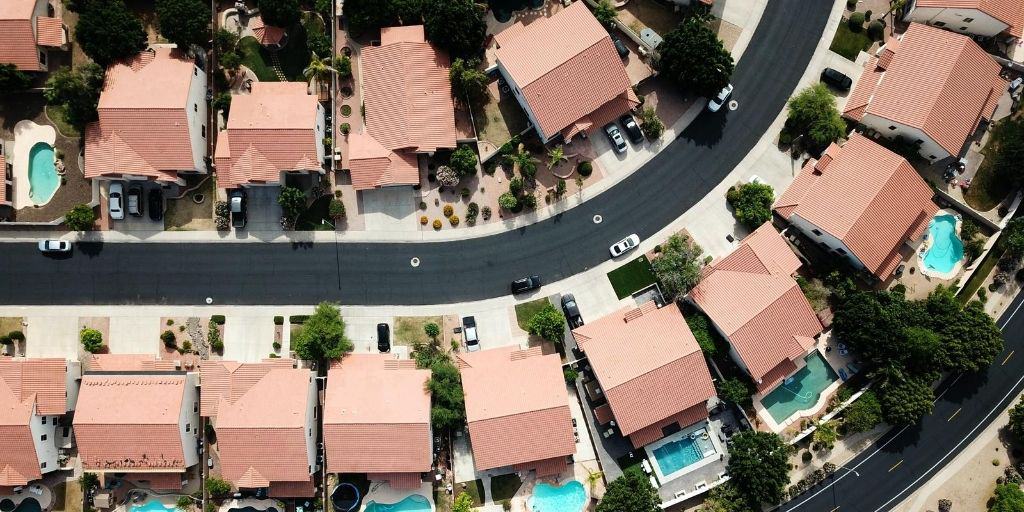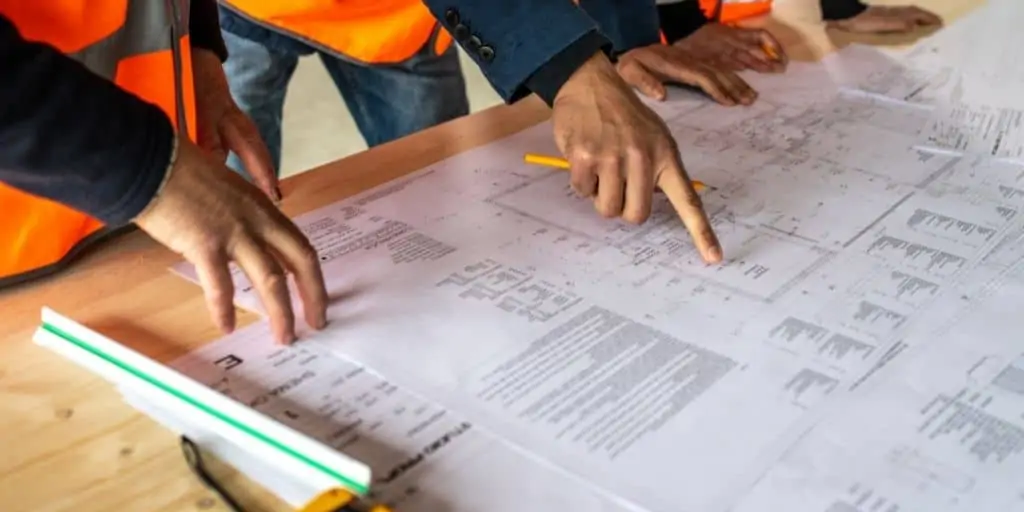
Vacant Land is one of the most overlooked and misunderstood real estate investments in the world.
Most real estate investors completely fail to recognize the superior benefits that come with owning land in its raw form.
It’s unfortunate because the simplicity and stability that come with owning the right piece of land (purchased at the right price) can far outweigh the myriad of problems that are certain to come up with any other type of real estate.
While I firmly believe that vacant land is one of the best places you can put your money, there is another side of the story that needs to be carefully considered.
As an experienced land investor, I’ve learned (sometimes the hard way) that there are a number of things that need to be evaluated before purchasing a parcel of vacant land.
Land Can Be Deceptively Complicated
On the surface, it seems like such a simple creature – but there can be A LOT of potential problems lurking beneath the surface of any piece of land. I wouldn’t necessarily say all these issues are common, but the fact is – any one of these things could potentially be a deal killer if not addressed properly. When you take it all into consideration, it adds up to a sizable list of things that ought to be investigated as part of your due diligence process.
Don’t get me wrong, land is a rock-solid investment. It’s just a matter of knowing what to watch out for, and under what circumstances you should re-adjust your offer price (or walk away from the deal altogether).
1. What is the Zoning on the Property?
 First and foremost, it is vitally important to understand what a property can be used for, and what the highest and best use of the property is. With a simple phone call to your local planning & zoning department, most offices can give you the answer to this question in a matter of seconds.
First and foremost, it is vitally important to understand what a property can be used for, and what the highest and best use of the property is. With a simple phone call to your local planning & zoning department, most offices can give you the answer to this question in a matter of seconds.
Once you know the zoning classification (e.g. – residential, commercial, industrial, agricultural, etc.), ask them to give you some examples of what type of property would be allowed under your subject property’s zoning. They may even give you some ideas that you hadn’t previously thought of.
Once you understand the most ideal use for the land you’re looking at, you can quickly determine whether it will fit your needs (or the needs of those you intend to sell the property to in the future).
2. What is the Topography of the Property?
One of the first things I look at when evaluating a vacant lot is the topography of the property. There are many places around the world that have irregular elevations, cliffs, mountains, valleys, ravines, and more. In many cases, the topography of the will can have a major impact on the usability of a property.
For the same reasons you can’t build a house on a 90-degree cliff, you should be doing some preliminary research to find out where your property is located, and what the terrain of the land is.
One of the best ways to do this is by using Google Earth (which is free) and the topography map from Earth Point (which is also free). With Google Earth, you can search for your property (using the address or coordinates) and zoom in using your mouse buttons and the control/command and shift keys on your keyboard. This will allow you to tilt the earth so you can see precisely where all the hills and valleys are in your area.
Another helpful tool for seeing topography is MapRight, which can show these same contour lines throughout the country, as this tutorial explains.
As you can see, this combination of software can give you a crucial perspective on what type of property you’re considering. And if you want even more clarity on where the parcel lines of your property are, be sure to check out Parlay as another helpful resource.
3. What is the Annual Cost of Property Taxes?
If you intend to hold onto a property for any length of time, beware of a super high tax bill relative to the actual value of the property. I haven’t run across this issue very often, but for various reasons, there are some properties that have some ridiculously high taxes in proportion to the property’s actual value (for example, if a $10,000 property has an annual tax bill of $2,000, THIS IS TOO HIGH). In my experience, I’ve found that a reasonable annual tax bill usually falls in the range of 1% – 4% of the property’s full market value.
Whatever the situation, make sure you’re aware of this cost because it will be your obligation to pay it for as long as you own the property.
4. What Public Utilities are Available? (Water, Sewer, Electric, Gas, Phone)
If a property doesn’t have access to one or more of these common public utilities, the property (for all intents and purposes) may not be the most ideal candidate for building a home or other improvements.
After all, who would want to build a house where they can’t flush the toilet or get access to clean water?
Granted, there are alternatives that can be sought if the owner is willing to pay the price (septic systems, well water, solar energy, propane tanks, etc), but if these obstacles exist, you’ll want to know about these before you buy.

If a property isn’t an ideal fit for building, it could lose a massive portion of its value, especially if the most ideal use of the property is to place a structure on it. Since most people buy land with the intent of building on it, you will definitely want to know about anything that could get in the way of this objective.
5. What Are the Required Building Setbacks?
Once you understand the dimensions of the parcel you’re evaluating, call the local planning department and ask them what the designated building setbacks are for the property (building setback requirements are very common, and are imposed as a way of giving order and consistency to the buildings in any given area).
When you take these setbacks and regulations into account (relative to the size of the parcel), ask yourself, is there still enough room to build something worthwhile here, or does is this property basically useless?

I’ve come across several properties that were too small to build anything because of the size of the property in relation to the required setbacks. Similar to the utility issue mentioned above, if a property isn’t buildable or has severely limited uses, it will lose a massive portion of its value.
6. Does the Property Have Any Usage Restrictions?
Most of the vacant land you’ll encounter will have SOME kind of usage restrictions in place (there’s a reason you’ll never see a 100-acre pig farm next to a 100 story skyscraper, or a massive shopping mall next to a landfill… it just doesn’t make sense).
Every municipality in America has a plan (even if it’s a vague one) for how they want different sections of their land to be used, regardless of who owns it. As such, you should always expect your property to come with some reasonable limitations on what it can be used for.
If the property is part of a Home Owner’s Association (HOA) it will most likely have even more restrictions in place to help maintain the “quality” and formality of their neighborhood. The idea is to keep any bizarre behavior OUT of the neighborhood (e.g. – cars in the front yard, lawns nobody takes care of, houses that look out-of-place, etc).

Usage restrictions aren’t necessarily a bad thing – they usually make sense on some level. They’re designed to help maintain order and support the value of each property in the subdivision. On the same coin… if you aren’t aware of these restrictions before you purchase, they can also create some conflict with the plans you had in mind for the property.
This isn’t common for most land investors (because most people have no intention of using their property for purposes that don’t jive with their surroundings), but even so – you should always make sure you understand what the rules are BEFORE you buy a parcel of vacant land. This will help you avoid owning a property that requires maintenance you don’t want to do, or that can’t be used for your intended purpose.
7. Is the Property Located in a Flood Zone?
In some parts of the country, parcels of land are vacant because they are literally underwater. In other areas, there may be properties near bodies of water that are at high risk of flooding.
In either case, if a property is located in a flood zone – you’ll want to know about this BEFORE you buy because when a property is in a flood zone, it can be extremely expensive to insure.
Land located near a body of water can be extremely valuable, but this close proximity can also create a number of potential issues… so be sure you understand the ramifications of your particular location.
Want to check and see if your property is located in a flood zone? One quick way to verify is to check the FEMA flood maps in your area. You can do this by visiting FEMA.gov and following the instructions in the video above.
8. Does the Soil Percolate (aka – “Perk”) or have Access to a Nearby Sewer System?
If you’re planning to build a dwelling of any kind on your parcel of land, there is one issue that may seem insignificant at first glance, but it has the potential to make or break a land deal. It’s called a “Perc Test” – and if you’re dropping some serious coin on land in a rural area, this is an issue you’ll want to be sure about before you sink your money into it.
A Perc Test (also known as “Perk Test”, and more formally known as a “Percolation Test“), is a soil evaluation that tests the rate at which water drains through the soil. If a property doesn’t have easy access to the local sewer system, a perc test is required to determine whether a septic system (the alternative to a sewer) can be installed on the property.
If a property doesn’t pass this test, you could have a very difficult time building any type of dwelling on the property, so unless you’re able to tap into the municipal sewer system (which will negate this issue altogether), be sure to give the county health department a call and ask them what is required to install a septic system (or connect to the local sewer) in your area.
9. Does the Property Have Road Access?
Believe it or not, there are thousands of properties all over the country that have no road access. They are surrounded on all sides by other privately owned properties, and since there is no way to access the property without trespassing over someone else’s land, the property is legally inaccessible. In a sense, these properties might as well be on another planet because nobody can legally get to them!

This issue can be overcome if you’re able to obtain a legal easement to the property from one of the surrounding neighbors, so you can travel through their property to your own. In most cases, a neighbor shouldn’t be expected to do this for free, you’ll have to give them a reason to help you (usually in the form of money).
This isn’t an impossible issue to overcome, but it is definitely something you’ll want to be aware of before you purchase.
Landlocked properties aren’t always a deal-breaker (sometimes they can be a great opportunity if you’re able to resolve the easement issue), but you’ll want to be aware of the problem ahead of time, so you can adjust your offer WAY lower to account for the limited usability (or just walk away from the deal altogether).
10. Does the Property Have Physical Access?
Some properties may not have road access, but they do have physical access through a common area or government-owned land. Even without the convenience of a road, the ability to access your land without trespassing over someone else’s property will offer an important benefit.

For obvious reasons, a property with any physical access is preferable to a property with no access at all.
This type of physical access can often be identified when looking at GIS parcel lines and satellite maps. Simple foot trails or ATV paths to and from a property from a public road can be a good indication of established physical access that has been used consistently for a length of time.
11. What is the Size and Shape of the Parcel?
I’ve seen a number of properties that are virtually useless due to their size and shape. I remember on one occasion, I came across a parcel of land that was 5 feet wide and 900 feet long. I’ve also seen properties that were 10 feet by 10 feet.
If you see a parcel of land with an odd shape, use your common sense. If you can’t think of any legitimate uses for a property with its given dimensions – you’ll probably want to pass on it.
You can find the size, shape, location, and dimensions pretty quickly if your county has a free GIS mapping system online.
You can also use a service like Parlay (which requires a paid subscription) and Google Earth (which is free) to find a parcel map of your property. Here’s how it works:
Of course, none of these GIS mapping systems are perfect. The only way to be 100% certain about the size and shape of a property is to order a land survey, but if you’re looking for a faster, cheaper way to get a basic idea that is usually reliable enough, these online mapping solutions can be very useful.
12. Does the Property Have Access to Water?
There are a lot of properties in the world that don’t have access to a municipal water supply (i.e. – city water). This isn’t necessarily a problem, but it does mean someone will have to drill a well in order to access a clean water source beneath the surface. There are a few ways to determine whether or not you’ll be able to do this but in most cases, if there are other buildings in the near vicinity (e.g. – homes or other dwellings built next door), this is usually a good indication that you won’t have any problems accessing water either.

If you’re looking at a vacant lot in the middle of the desert or near the top of a mountain with nothing around for miles, you will probably want to verify with a professional that water will be accessible if/when you need it (and if your only option is to have it hauled in by truck, you’ll want to get an idea for how much this will cost on an ongoing basis).
13. Are there Wetlands on the Property?
 Wetlands can present some tricky situations for landowners.
Wetlands can present some tricky situations for landowners.
Throughout most of the U.S., there are federal and state laws that prohibit landowners from developing or using their land in any way that will adversely affect wetland areas (which renders most wetland areas unusable). This is why it’s important to identify the presence of wetlands BEFORE closing the deal.
Ultimately – the only way to be 100% confident about the presence of wetlands is to enlist the help of a wetlands consultant and/or have the appropriate government agents conduct a wetland identification and delineation on-site.
The problem is, this is a lot to ask – especially when the transaction needs to close quickly.
If you want to identify any obvious red flags without leaving your computer, it is possible to do some reconnaissance-level research and get a more educated look at the wetland situation on your subject property. I’ll explain one method in this video…
You can get started with the Wetlands Mapper, or you can download the KML file and view this same Wetlands Data on Google Earth.
Now, since the wetlands mapper doesn’t always provide the most accurate measurement in all areas, another tool you can use to assess the situation is the NRCS Web Soil Survey, which is compiled by the UC Davis Soil Resource Lab. I’ll show you how it works in this video…
You can download this SoilWeb KML file by visiting the USDA Ag Data Commons.
Keep in mind, using the Wetlands Mapper and/or the Web Soil Survey is NOT the same thing as hiring a wetlands consultant and/or having the USACE do a delineation on your property (so realize, there are no guarantees with this approach). However, if you’re just looking for an educated guess, both of these online tools can be used as a starting point.
14. Junk, Tires, Rubble, Oil, or Other Contaminants on the Property?
On a few occasions, I’ve discovered that what I thought was a piece of vacant land, was actually a makeshift landfill. If you’re going to buy a piece of land, make sure that all you’re getting is LAND (and if anything else is coming along with the deal, make sure it’s something you actually want).
These kinds of messes can be very expensive to clean up, and as a way to avoid any unwanted surprises on this front, it’s always a good idea to actually see the property you’re purchasing.
If you’re purchasing the property from a long distance and it simply isn’t feasible to see the property yourself, there are a few ways you can find a local set of eyes to find the property and get some pictures for you.
One easy way to do this is to find a local photographer (i.e. – anyone with a cell phone camera) who can travel to the property and get pictures for you. You can do this by posting a job ad on Craigslist under the nearest city name > gigs > creative gigs.
Depending on how far they have to drive, and how many pictures you need, usually $50 – $100 is sufficient for this kind of work.
You can also try to contact a few local real estate agents in the area and ask them if they can drive by the property and snap a few pictures when they have a chance. Most agents are regularly in the field anyway, and it isn’t a huge request for them to swing by your property and get some pictures (especially if you show any interest in using them for your future listings and/or paying them a few bucks for their trouble).
However you decide to get a look at the property – make sure you are 100% clear about where the property is located, and communicate this thoroughly to the person getting pictures (send them parcel maps, directions, even a video if you need to).
15. What Were the Previous Uses of the Property?
Most states have environmental laws that pertain to commercially zoned property (i.e. – properties zoned “Residential” generally aren’t held to these standards). If you’re considering a vacant lot zoned for commercial development, make sure you’re not inheriting any environmental contamination with the property.
For most commercial properties, the best way to do this is by ordering a Phase I Environmental Report (many banks will automatically require this because it affects their collateral). This report will identify if there are any “Recognized Environmental Concerns” (RECs) on the property that you need to worry about. If you neglect to do any environmental due diligence, the liability for any existing environmental contamination on the property could ultimately fall on your shoulders – making it very difficult and expensive to sell the property in the future.
Another way to get a quick look at what has been going on (and around) the property in question is to look at the historical satellite imagery of the property with a tool like Google Earth.
Here’s a quick look at how it works…
As you can see, it’s not necessarily the most comprehensive or scientific way to review a property’s history – but it’s quick, easy, and it doesn’t cost anything – which makes it a pretty good place to start.
16. What Does the Surrounding Neighborhood Look Like?
The properties next door can have some MAJOR implications for the value and “sale-ability” of a parcel of land (e.g. – Think about it, would you rather live next to Yosemite National Park or a Landfill?). For understandable reasons, most people care a great deal about who and what they live next to, so be sure to get a good idea for what the surrounding properties look like (hint: this is another potential area where a service like WeGoLook can help).
Is this a desirable area? Is it the type of place where you (or anyone else) would want to live? If the surrounding properties have any obvious issues that are beyond your control, you’ll want to think very carefully about what this means for the property’s value and whether or not you want to own it.
For a quick tutorial on how to very quickly find out what the adjoining properties look like next to the parcel you’re researching, this video explains one way to do it:
These are the questions I ask myself before I buy any piece of vacant land. This isn’t intended to be an all-inclusive list of EVERY possible issue you could ever encounter, but I’d say it covers about 95% of the potential concerns you ought to be aware of. Most of these issues come up very infrequently, but they are very important things to consider nonetheless. Remember, you don’t need to be afraid of buying vacant land. You just need to be informed.
17. Soil Quality
If a parcel of land is going to be used for agricultural purposes and growing crops, the quality of the soil will play a big role in determining if this is an ideal use for the property.

Everything from the health of the soil (salinity and alkalinity), the status of the water table, and the extent of water table depletion, the fertility of the land, and historical crop yield, and many other factors will contribute to understanding whether a parcel of land will have good, tillable soil to offer.
18. Soil Load Bearing Capacity (Geotechnical Investigation)
If you plan to develop the property or build any kind of structure on it, many land buyers will hire out a geotechnical investigation. The purpose of this investigation is to drill into the soil and take samples of the soil to determine how much weight the ground can handle.
Why is this important? Because if the soil is too soft in certain areas of the property, the foundation of the building could potentially sink and cause structural damage to the building, the foundation, and the façade. Obviously, nobody wants to spend big money to construct a beautiful building, only to see it fall apart because it wasn’t built on firm soil.
For this reason, a geotechnical investigation can provide critical information as to whether a property is suitable for building and/or if any changes should be made to the soil before pouring the foundation.
Keep in mind, not all vacant land purchases warrant this type of investigation. For example, if a vacant lot is in an established, platted subdivision, chances are this investigation was already completed back when the subdivision was first constructed. However, if you’re buying raw land that has never been evaluated for building, this could be an important step to consider in your due diligence.
19. Title Search
When you close on your land purchase through a title company or real estate attorney, this will likely be handled as part of their closing process. However, if you are buying land directly from the seller and conducting the closing yourself (which I would not recommend if you’re paying more than a few thousand dollars), there are a lot of things you need to verify in order to ensure you are receiving a clear and equitable title to the property. The last thing you want to do is buy a property from someone who doesn’t actually own the property.
This blog post explains many of the basics of how a title search works, but some of the key takeaways are,
- It’s important to be sure you’re receiving a warranty deed from the seller
- You’ll want to perform your own title search to ensure there is a clear chain of title and there are no outstanding liens or other clouds on title
- If there are any outstanding restrictions on the property or rights that other parties own (mineral rights, timber rights, crop rights, grazing rights, etc), you’ll want to be fully aware of those before you buy the property, not after you own it.
20. Site Plan and Preparation
Again, if you’re buying a property for the purpose of building any type of structure, an often-overlooked cost that most people don’t take into account is the cost of creating the site plan and preparing the ground for construction.
Every construction project needs a well-thought-out plan. Not only for the building itself but also for the ground beneath that building. If the earth needs to be re-shaped, if a well needs to be drilled, if sewer pipes, utility lines, and other amenities need to be added before the construction can begin, all of this needs to be thoroughly understood before the project starts.

Civil engineers are typically hired to compile these plans and (surprise, surprise), they cost money. Sometimes a lot of money! Whatever you’re planning to build on your property, be sure to talk with your general contractor or a local civil engineer to get an idea of how much additional cost this will tack onto your budget for the property.
21. How Will You Hold Title to Your Land?
Another critical part of any real estate purchase is understanding how you will hold title to the property.
- Will you be the sole owner, owning the property in your personal name?
- Will you own the property under the name of an LLC or some other corporate entity?
- Will you own the property along with someone else (a spouse, family member, or business partner)?
There isn’t a right or wrong way to hold title across the board, but depending on how many parties are involved, the dynamics of your relationship with them, and how much liability protection you want, there could be some important considerations to think about.
If you plan to own the property along with one or more other parties, you’ll want to understand the consequences of owning the property with them as joint tenants, tenants in common, tenants by entirety, or any other title vesting options available in the state where the property is located.
Don’t Be The “Greater Fool”
The trick with vacant land is to understand why it’s vacant in the first place. I’ve run across quite a few vacant lots that seemed attractive at first glance, but eventually, I discovered the reason nobody was using them was that you CAN’T use them. If one (or more) of the issues above are prohibiting someone from putting a property to good use, believe me – you don’t want to find out after you already own it.
When some people look at the prospect of owning land, they get wrapped up in the dream of property ownership. The idea of owning a large tract of property can seem very appealing, even if it is of no practical use to them. This kind of trap is especially easy for people to fall into with land because it’s a low-maintenance property and doesn’t seem complicated (even though there are a lot of factors to consider).
MANY people buy into the dream of property ownership – even if the investment makes absolutely no sense from a financial standpoint. If you don’t believe me, check out this guy who sells land on the moon:
Unfortunately, many parcels of land are sold to “the greater fool”. When people don’t do their homework and think things through, they can get hurt.
Don’t be the greater fool. Always be sure you have done a reasonable amount of research and don’t take on a property until you thoroughly understand what you are getting into.
Original article found at https://retipster.com/truthaboutlandinvesting/

